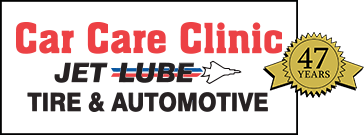We asked some of our customers how they are able to save money by going longer between pump visits. Here are some of the responses we received.
Track Your Mileage in Real Time
Knowing what your consumption looks like from tank-to-tank is important, but that’s really not enough. Knowing what mileage you’re getting in real time–being able to compare it to what you got yesterday or even 10 minutes ago–is the new way to drive these days. Several of the newer cars today tell you what your average fuel consumption is right on the dash.
If you have an older car (made after 1995), you can throw some money at a fuel-economy computer like the Scangauge, and you’re instantly instrumented. For older cars, you may need to get your knuckles dirty by installing a vacuum gauge, which measures how hard the engine is working, or explore the growing world of DIY fuel-economy electronics, like the arduino-based MPGuino. Either way, a conscious mind combined with instant feedback should get you that instant 10 percent.
Only Brake When You Have to
I recently found myself fighting against a 10-mile backup on I-20. The traffic wasn’t exactly stop-and-go, but the pack was constantly speeding up and abruptly slowing down. So I did something a little different.
When everyone started taking off, I gave myself a 10- or 15-second buffer before hitting the gas and accelerating. By accelerating slowly and leaving space ahead, I could see the brake lights ahead before I expended a significant amount of gas, coasting right back up to the car in front of me. If I timed it just right, my Honda would meet the car just as it started up again, without using the brakes at all. My gas mileage actually went up to over 70 mpg while sitting in traffic!
Always Stay Alert on the Road
To drive without brakes or coast toward stops effectively, you have to know what’s going on around you and be able to anticipate how traffic will play out. That means paying attention to the lights on your daily commute–heck, memorizing them–and trying to anticipate whether they will, say, turn green by the time you get there. And, again, always look several cars ahead to see if the brake lights are starting to come on in anticipation of a coast.
Drive Like You’re on a Bike
OK, don’t necessarily go 20 mpg out there, but try to imagine biking over the same route that you’re driving on: When you’re headed uphill, it takes a lot more effort to maintain speed than it does going down, so give the car a break and let yourself lose a few mph on the way up. Relax, you’ll easily get it back on the other side. Your car burns the most gas when it’s forced into high-load situations, so try to remember what makes biking difficult (like going really fast, accelerating really hard and speeding up hills), and make those situations as painless as possible by laying off the gas.
Make Your Car Your Own
Every mainstream passenger car is a compromise built with many different drivers in mind. Because there are all too few vehicles built specifically with gas mileage as the primary design element, there’s a lot of improvement to be had in modifying your existing ride. Some people will do little things to improve aerodynamics, like adding a grill block, smooth wheel covers or rear-wheel skirts. Others will remove alternators, swap engines or convert their car to run all-electric. Either way, optimizing the design of your car is one of the most effective ways to improve fuel economy. After all, it was my automatic-to-manual conversion that really boosted me from the high 30s and low 40s to that 55-mpg territory.
Pump Up Your Tires–Really
One of the biggest areas in which manufacturers compromise fuel economy for comfort is in tire pressure. That 32-psi rating is mainly there to make the ride smooth as silk, even as you run over potholes and pedestrians. It can be controversial, but believe it: To get the best mileage out of your car, up the pressure to the maximum listed on the sidewall. The ride will get a bit rougher, but your rolling resistance will be reduced and you’ll get better gas mileage. But don’t just do it once and forget about it! Make sure to check your tire pressure every other time you fill up, or you could be leaking air and losing MPGs.
Use the Right Ride for the Job
It may seem like a no-brainer, but it may be the ultimate fuel-saver: Why take a gas-guzzling SUV to work when a smaller, more efficient fuel-sipper will do? And if public transportation or carpooling is an option, you’ll not only save on gas, but also wear-and-tear on your vehicle.
Multi-Task With Your Daily Routine
Are you going out to run weekly errands, or are you just dropping one letter off at the post office and coming right home? You will essentially cut distance traveled and fuel usage in half by making all your stops at once, instead of taking lots of short round-trips.
Plan Your Route Ahead of Time
Take the path of least resistance. That’s one with fewer stoplights, not as much traffic and, yes, lower speed limits. Even if you save 0.1 gallons of gas each day, you’ll save more than $130 per year.
Avoid Rush Hour at All Costs
These days, many offices are offering flexible hours, so errands can be run at any time. Try to avoid being stuck in traffic if all you have to do is leave 30 minutes earlier or come in 30 minutes later.


